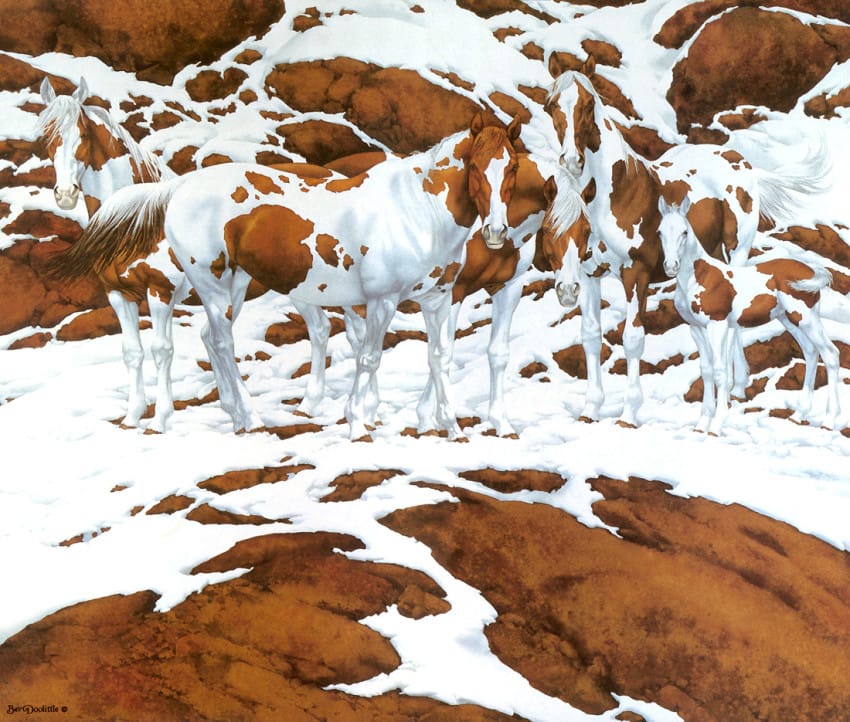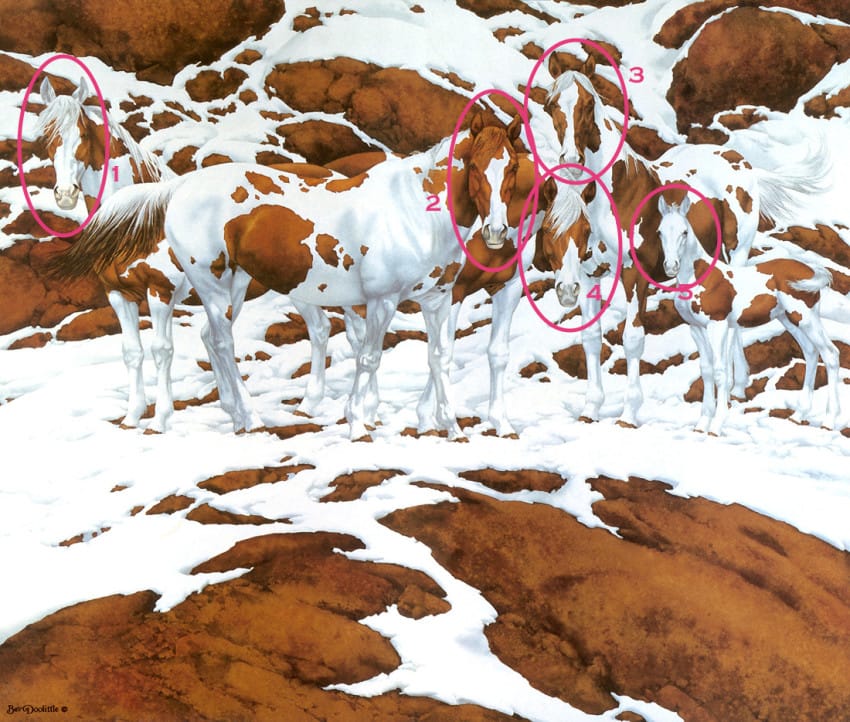
One of the latest internet trends are the optical puzzles. Every day on the websites thousands of optical illusions can be found. And you have to admit that those tricky puzzles are very interesting and they catch everyone’s attention. But the optical illusions are not a new thing, they’ve existed since very long and they’ve been a challenge and an inspiration for artists for years.
Artist Bev Doolittle is one of the most successful artists of optical illusions in the world. Her paintings that resemble camouflaged objects and they are loved by art enthusiasts as well as ordinary viewers all over the world. With her commitment she developed a characteristic style and her unique talent was especially expressed in paintings with hidden meanings. Paintings of optical illusions are intriguing for all viewers because they are created in a manner where the theme, the layout and the ornamentation help viewers discover meanings which seem hidden and disguised only until they become evident.
The painting that became virtually a new genre is Bev’s signature painting “Pintos” and it was created in 1975. She got the inspiration for this painting while she was on a voyage with her husband in Southwestern America. The sight of a herd of chestnut horses fascinated her and the idea for “Pintos” was born.
Here is the painting, take a closer look at it and see how many horses are there in the painting. When you finish counting, check your answer below…
There are 5 horses in the painting! Surprised? How many horses did you find? Did your eyes fool you? So, the horses in this painting weren’t hidden, just well camouflaged.
Horses and optical illusions are a combination that has inspired other artist as well. One of them is the American artist Jim Warren who is an artist with traditional technique but unconventional motives. Creating the way he feels his art is never conforming and his paintings fancifully surreal, amazingly storytelling and with hidden motives. Warren is famous for his “Seven Horses” painting. That is the title of the painting but most of the people fail to pinpoint all seven horses. Why don’t you try to find all of them! Let’s count!
Most of the people succeed to find only 4 horses and have difficulties at finding the remaining 3.
How did you go? You saw these four horses, right? Or you were more successful than the majority and got to see all seven? If you didn’t, we will help you!
Horse number five is not an actual horse, but it is an outline of a horse.
Number six is more hidden than the previous five. To reveal number six you will have to rotate the painting in 180°.
Number seven is a real trouble. It is not an outline, neither you need to flip the image, in fact it is not even present on the image. The last horse has left the scene and all you can see are the traces left behind it.
How did you like these optical puzzle classics? Where you good at finding the horses? Share this story with your friends and count together.

